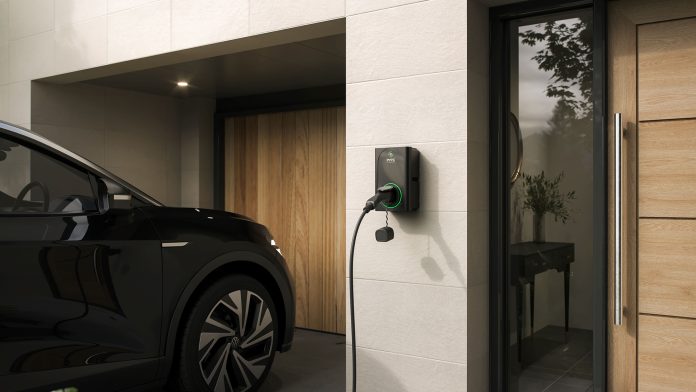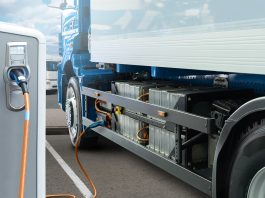Tom Bloor, MD at evec, discusses expansion in the EV industry and the current barriers standing in the way of widespread EV adoption.
In recent years, the EV industry has experienced a surge in growth, driven by technological advancements, supportive legislation, and increased consumer demand for sustainable transportation solutions.
The government’s ambitious plans for electric vehicle adoption are underpinned by a commitment to bolstering charging infrastructure and ensuring widespread access to EVs. These initiatives drive growth in the EV industry and pave the way for a more sustainable future.
The mandate for zero-emission vehicles (ZEV) dictates the proportion of new zero-emission cars and vans that manufacturers must produce annually until 2030. By 2030, 80% of new cars and 70% of new vans sold in Great Britain must be zero-emission, and by 2035, this figure will increase to 100%.
As confirmed by the UK government, grants for installing EV charging points are now available to help businesses, schools, colleges, and nurseries adopt electric vehicles. These grants include those for state-funded schools to help with EV charge point costs and proposals to ensure charge points can be installed even faster.
Government-backed incentives, such as the Workplace Grant and the Infrastructure Grant, now provide companies with substantial financial support, making fleet electrification a financially attractive proposition. For educational institutions, grants of up to £2,500 per parking space are available, further incentivising the adoption of EVs in schools and colleges.
However, challenges persist, as even with grants helping people adopt the EV revolution, the need for more public charging infrastructure becomes a significant barrier.
A 2022 survey from Lloyds Bank suggests only 56% of British homes can currently support electric charging points, excluding many from changing to an electric vehicle. This underscores the urgent need for more public charging options. With the government planning to ban petrol and diesel cars by 2035, the charging infrastructure must develop significantly to accommodate the anticipated surge in EVs.
Expanding charging infrastructure
Concerted efforts are underway to address the shortfall in public charging infrastructure. The UK government has rolled out various measures to bolster charging infrastructure nationwide. For example, the government’s Plan for Drivers is partially there to help boost the charge point infrastructure ahead of the 2035 zero-emission vehicle goal.
Just over a year ago, the UK government revealed that it allocated more than £380 million in funding to local authorities across England via the Local Electric Vehicle Infrastructure Fund. The funding will be utilised to install tens of thousands of local chargepoints, thereby greatly enhancing the availability of charging for drivers who do not have off-street parking.
The investment of the grant for schools also comes into play massively here. Schools have one of the largest estates of any public building entity in the UK and are traditionally centred in residential areas, which the government say could provide a potential source of charge for staff, visitors, and residents at night, at weekends and during school holidays.
This strategic investment in charging infrastructure is pivotal in alleviating range anxiety and enhancing the convenience of EV ownership. Expanding the network of public charging stations will allow drivers to embrace EVs confidently, regardless of their residential circumstances.
Rising EV uptake
There has been a significant rise in the uptake of EVs, made evident by the number of monthly new car registrations. In March 2024, electric cars accounted for 15.2% of all new registrations, marking a significant milestone in the transition towards electrification.
According to ZapMap, as of the end of March 2024, the number of fully electric vehicles in the UK has surpassed 1,000,000, while 645,000 plug-in hybrid cars are also on our roads.
Consumer preference trends are reflected in the increasing market share of electric cars. According to predictions, EVs will surpass all other fuel types except petrol in terms of sales by 2024. Petrol is projected to remain the most popular choice for used car buyers for the next few years. As drivers opt for cleaner and more cost-effective plug-in alternatives, diesel is expected to become a niche option over time.
Manufacturers are also now offering the UK market a more extensive variety of plug-in models. Nissan, Tesla, Ford, and Vauxhall have expanded to include affordable plug-in models and EVs, giving people more choices when choosing an EV. This enables a wider variety of users to access the EV marketplace.
Future outlook
The electric vehicle industry is poised for continued expansion and innovation as we look ahead. With supportive legislation, robust charging infrastructure, and escalating consumer demand, the momentum towards electrification shows no signs of letting up.
As battery technology advances and EV range increases, the barriers to adoption will hopefully start to diminish, and range anxiety will decrease, further accelerating the transition away from petrol and diesel vehicles.









